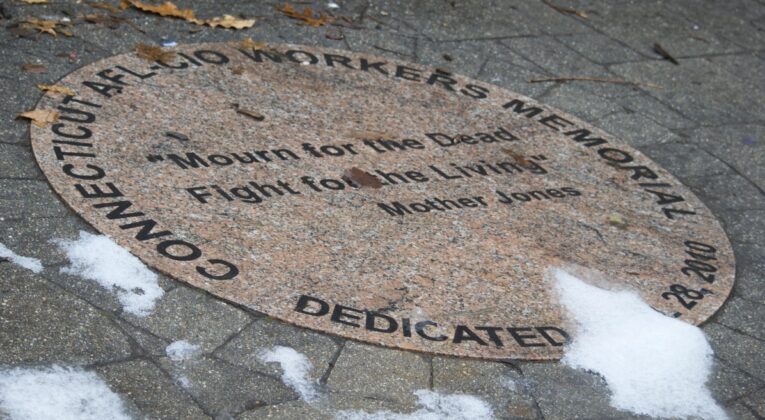This whole series is an effort to honor the dead and “fight like hell for the living.”
That means telling hard truths that often push up against what we have been taught and are continuously told by media and half-measure public education campaigns.
Before getting into the needless traffic violence from January, let’s look at some of what leads us to it.
The Connecticut DMV’s driver’s manual instructs motorists to “recognize the special safety needs of pedestrians” and follows this with an unqualified statement: “Drivers should be especially alert for children, the elderly, and disabled pedestrians. They are the most frequent victims in auto pedestrian collisions.”
If measuring victimhood by getting hit at all, then perhaps, but if thinking about who is seriously and fatally injured the most, then the situation changes.
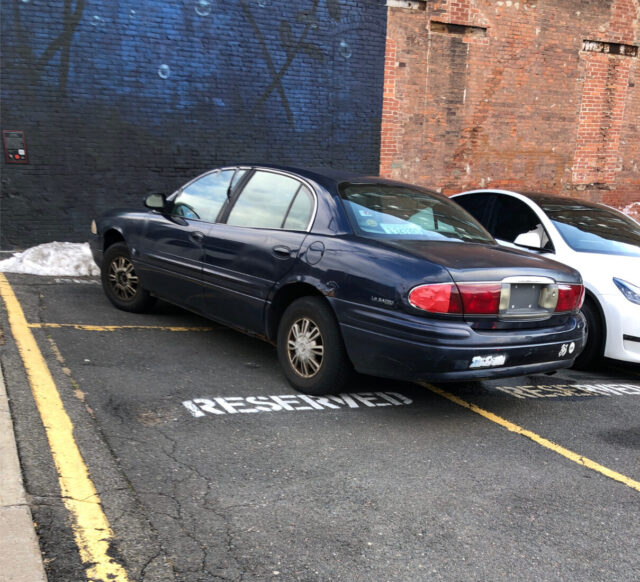
From this, you might think that children are being killed in large numbers as pedestrians, but in Connecticut, that is not the case . . . and when they are fatally struck, it’s generally by family members driving overly large vehicles and/or without sufficient care in driveways. Of the youth pedestrians killed by cars in our state in recent years, only one fell into the cautionary narrative pushed by the DMV: “Children are often the least predictable pedestrians and the most difficult to see. Take extra care to look out for children, especially near schools, bus stops, playgrounds, parks and ice cream trucks.”
The vast majority of pedestrians killed by drivers are older adults and those with disabilities.
The treatment of these groups (which overlap at times, but not always) raises questions. The manual says: “Elderly and disabled pedestrians may have poor vision and hearing and may move slowly.” And that’s all the manual has to say about the elderly. It does need to be spelled out that even if the time runs out on the walk signal, the driver should remain stopped, fully, until the pedestrian has reached the curb, safely. No horn honking. No rolling forward. Stopped.
It’s interesting to me that it’s not acknowledged that the elderly can be unpredictable. Anyone who has had a family member with Alzheimer’s knows this. The point here is not that all or most elderly have Alzheimer’s, but that we cannot tell from inside a car two blocks away what a person may be thinking or afflicted by. We don’t know if the 30-year old crossing has hearing loss. We don’t know if the 40-year old crossing is impaired by alcohol/substance use. It feels more reality-connected to train drivers to yield to all pedestrians and cyclists, and to expect anyone they encounter — outside of a vehicle or in the driver’s seat — to behave in ways that may feel unexpected.
But our DMV does not do this. They don’t explicitly tell motorists they have a duty not to harm others.
A little more is said of how drivers should regard pedestrians who have visible disabilities. In a section marked “White Canes and Guide Dogs” It’s written that “Blind or partially blind pedestrians may carry a white cane or use the assistance of a guide dog. You must give the right-of-way to a pedestrian with a guide dog or who is carrying a white cane, with or without a colored tip. Stop and stay stopped if the person is attempting to cross or is in the process of crossing the road. At regulated intersections, remain stopped until the pedestrian is out of the road, even if you have a green light.”
This is the kind of treatment that all pedestrians should receive, yet the Department of Motor Vehicles has decided that we only need to be extra, extra cautious around those who we can understand in a split second are more vulnerable because they’re either small (those children allegedly darting around) or those whose disability requires a white cane and/or guide dog.
The CT DMV — and all licensing outlets — should dramatically revamp not only their manuals but what they require of people in order to get their license. That is, they should require something. One of those things would be that all applicants have to — regardless of where they’re living or how inconvenient this may seem — experience transportation in multiple ways, which would include one full week of riding the city bus (not an express bus) and one full week of cycling or walking as transportation if they are physically able, and most are. Why? Because if you’re not on a city bus, you are not seeing how many people have one kind of disability or another — many of whom would not use that word to describe themselves. Applicants would see how many are using wheelchairs and walkers, how many are leaning hard on their grocery carts, how many have no devices for assistance but who move slowly.
Drivers who don’t bike/bus/walk for transportation, tell me I’m wrong: when you see an adult (without a mobility device) crossing the road, you expect that they will speed up when they see a car coming.
You aren’t thinking that maybe this is the person’s top speed, that they are going as fast as they can. You aren’t thinking they’re moving slowly because they’re afraid of slipping on ice. You aren’t thinking that this younger person who looks fit possibly got a cast off their leg two days ago and are working back up to where they were before injury. When you see someone without a walker or wheelchair, you expect that they will just move. If I’m being generous, you think this because you assume they noticed you, the driver, down the street, and were only being leisurely when they thought nobody else was using the space. If I’m not being generous, you think this because you believe that roads are for cars and those inside them, and that people walking or cycling can only expect to use this space when it’s not in use by drivers. If I’m being ungenerous, you think that as a driver, you have important places to go and that the person walking or biking is merely doing something recreational and that they could not possibly also be traveling to work, appointments, or the grocery store. No matter what the reason is, the assumption is the same: all people walking can see and hear vehicles and can move out of the way.
Spending more time where the pedestrians are will teach you a thing or two about human movement that you won’t learn from the driver’s seat.
In the first month of this year, motorists killed five pedestrians in Connecticut.
- 4 of those 5 were elderly (64, 70, 79, 80)
- 4 of those 5 were hit on State of Connecticut DOT-maintained roads (Routes 7/202, 10, 44, and 110)
- 4 of those 5 were at night
In 2023, at least 58 pedestrians/cyclists were killed in Connecticut. Currently, the CT Crash Data Repository has records posted for 42 of them. Of those, half were over age 50, and 11 were over age 60. Ten were in their forties. Two older minor teens and an infant were killed, but what we tend to think of as a child (toddler through tween) does not appear. There isn’t much deviation from this pattern in recent years.
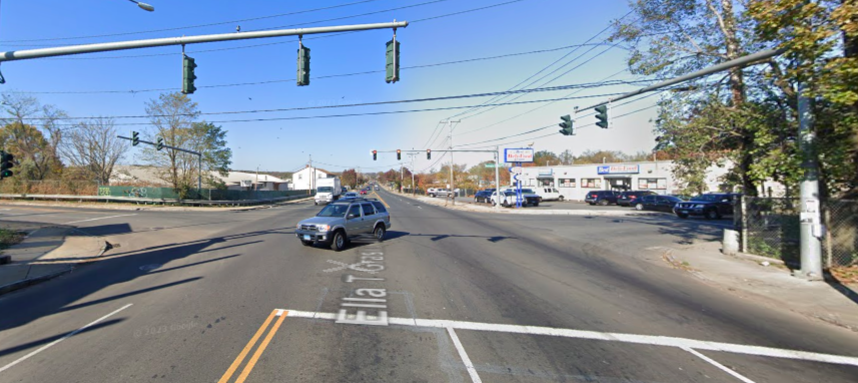
New Haven
On January 28, 2024 a driver killed Dennis Eaton, a 70-year old pedestrian at 1:30 in the morning.
This was on Route 10 in New Haven.
It’s important that we call roads by their names. Route 10 in New Haven continues to be Route 10 in Hamden. Both segments are disastrous. Dennis was at least the 12th pedestrian/cyclist killed by a driver on New Haven’s Route 10 since 2015.
How many times have I written about Route 10 here? What else is there to say? That pedestrians keep dying here isn’t a coincidence or merely bad luck.
Contact Mayor Elicker: MayorElicker@newhavenct.gov and New Haven’s Director of Transportation, Traffic & Parking: SAysola@newhavenct.gov and contact them again and again until it is easier for them to get after the CT DOT to fix this than it is for them to keep ignoring you.
Reach out to the New Haven Safe Streets Coalition as well, but don’t expect any advocacy group to do all the heavy lifting.
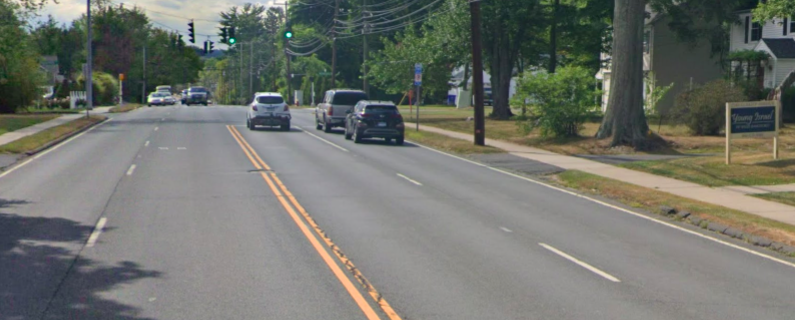
West Hartford
Days before David Goldfarb, 80, was needlessly killed on West Hartford’s Route 44, the Memorial Road Connector was re-opened to cars for the purpose of adding convenience for drivers. Immediately, this made it more difficult for pedestrians trying to cross South Main Street at the intersection where there is barely enough time to make it across one leg on the Walk signal, and even less time now that there are more vehicles using this road and making right turns on red without stopping, looking, yielding to pedestrians. Either West Hartford did not anticipate this or did not care. As someone told CT Insider, there’s a whole “culture of not caring.”
Care looks like honest efforts to keep one another safe. Instead, the Town of West Hartford’s decision-makers have made no quick builds or taken any other swift, meaningful actions to improve street safety at any of the sites where pedestrians/cyclists have been killed in recent years.
They have drafted a plan to have safety audits and roll out bumper stickers to raise awareness about distracted driving. There is talk of what might happen, yet no happening. This is how you know that every single decision maker in town has a private vehicle and does not rely on walking, cycling, or transit as their sole means of transportation. They’d have more urgency if they understood how streets are experienced by those walking to/from shul at night, how they feel to someone whose shift ends after the last bus leaves, how unusable they are for someone who walks slower than decision makers’ time schedules allow for crossing the street.
It felt like a hard slap to learn that while decision makers in West Hartford could find energy to re-open a one-block section of road for drivers, they would not implement even the simplest of safety improvements that have the potential to save lives. This is not a cash poor town, but so far it shows itself to be poor in political will. Painting more crosswalks or installing hi-vis signs warning drivers of pedestrians in area is the least that could be done and requires few hurdles be cleared, but the town would not even do this.
So, an active member of the community who served as gabbai for a synagogue that was a three minute walk (0.1 mile) from his house ended up needlessly killed because his town government hadn’t cared enough to do anything. It happened on a road without sufficient lighting. It happened on a road designed to allow cars to travel at speeds higher than the posted already-too-fast speed limit. It happened where the town wouldn’t respect the number of pedestrians who cross every day. It happened in a town where decision makers hesitate to do anything that will require drivers to wait, lest motorists become impatient. It happened where someone has to cross four lanes of traffic. It happened on the only road he needed to cross to get where he was going, and West Hartford did not care enough to keep him safe for that.
Send the Town of West Hartford a list of demands for safer streets now.
Contact the Town Manager: 860-561-7440 and TownManager@WestHartfordCT.gov
Contact the Town Engineer: 860-561-7543 and Greg.Sommer@WestHartfordCT.gov
Contact the Director of Public Works: 860-561-8100 and JohnP@WestHartfordCT.gov
Contact the Mayor’s Office: 860-561-7440 and Mayor@WestHartfordCT.gov
and, because it’s West Hartford and they’re used to ignoring everyone except for drivers who complain that it’s too hard to find parking, too hard to back into parking spots on LaSalle, too hard to park in their driveways instead of the street, unapologetically bring this to the Town Council as well.
Ben Wenograd (Deputy Mayor): ben.wenograd@westhartfordct.gov
Carol Blanks: CarolABlanksWH@gmail.com
Alberto Cortes: Alberto.Cortes@WestHartfordCT.gov
Mary Fay: Maryfay4WHCT@gmail.com
Tiffani McGinnis: Tiffani.McGinnis@WestHartfordCT.gov
Deb Polun: Deb.Polun@WestHartfordCT.gov
Barry Walters: Barry.Walters@WestHartfordCT.gov
Mark Zydanowicz : Mark.Zydanowicz@WestHartfordCT.gov
If any of them say they would’ve listened to you if you had been less rude, tell ’em bullshit. They hadn’t listened to polite requests for improvements for decades, and nobody needs to put on an act when it comes to demanding their right to move about safely.
You can also reach out to Bike West Hartford, a local advocacy organization.
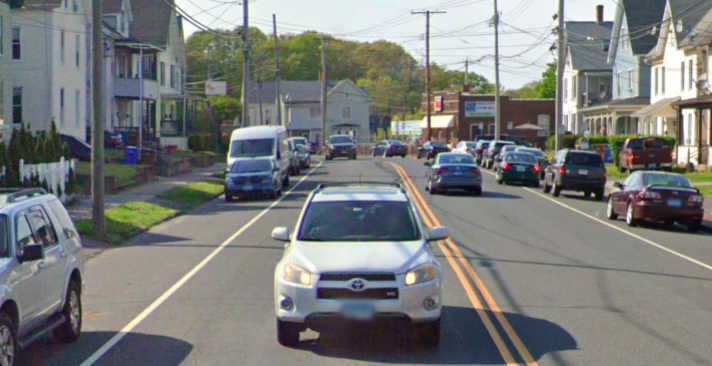
Shelton
Earlier on January 6, 2024, another pedestrian was killed, this time in Shelton. That there was even a fatal crash was not revealed by the news until 12 days after. It happened at 12:13 AM on Route 110 where the posted speed limit is 25 MPH. Stephanie Ann Peterson, 64, was walking home from her job at the Stop & Shop in neighboring Ansonia. News reports don’t say if she walked the full 40 minutes in 20°F weather or if she had taken a bus part of that distance. She was reportedly a few hundred feet from her home when the driver of a Nissan Rogue SUV slammed into her.
She was not the first pedestrian to needlessly die on Shelton’s Route 110 in recent years. In 2016, a driver killed another female pedestrian who was using the street 0.4 miles away at dusk. In both cases, the motorist did not remain on site to call for assistance, administer aid, or take responsibility in any other way. Since 2015, at least 14 pedestrians/cyclists have been hit and injured on Route 110 in Shelton — one of these was a cyclist at the intersection nearest to where the pedestrian was killed in January.
Contact Shelton’s city engineer — (203) 924-1555 ext. 1509 — to ask how decision makers intend to make Route 110 safer for pedestrians.
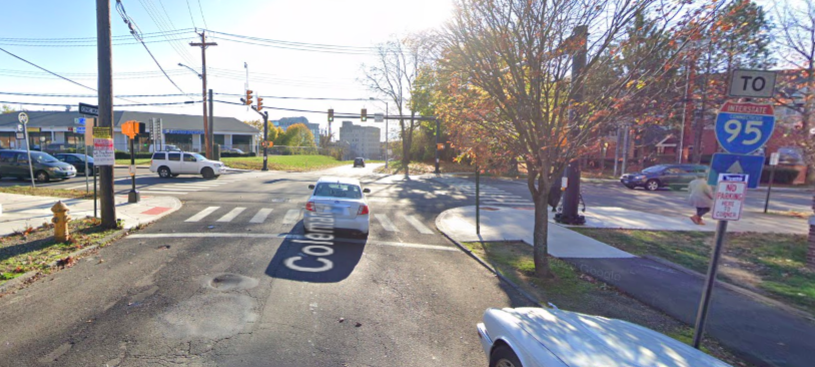
Bridgeport
The previous day in Bridgeport 79-yr old Marilyn Jones was killed by a driver as she used the marked crosswalk on Coleman Street at 8 AM.
This intersection is essentially a highway entrance, and even though there are residences nearby, not a whole lot of care as been given to helping pedestrians safely use this road. Sight lines aren’t great. Drivers can turn right on red at one leg of the intersection. The intersecting road is multiple lanes.
Just over one year before, a driver killed another elderly pedestrian on the west side of the intersection.
Contact Bridgeport’s Planner to demand safety improvements for this intersection:
Cathy.Fletcher@bridgeportct.gov
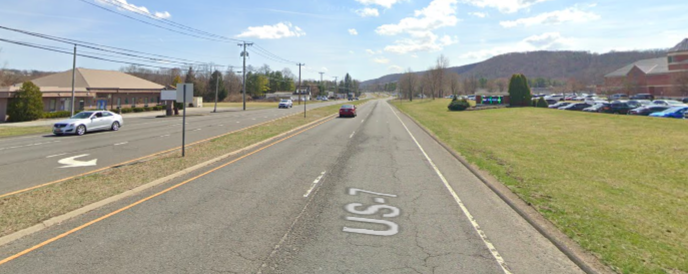
New Milford
And on January 4, 2024, Connecticut’s streets claimed its first pedestrian victim of the year — 43-year old Alexander Jefferson III from Queens. This happened on Route 7/202 directly in front of the high school in New Milford. Not “near”. In front of. You can see it in on the right side of the map screenshot above.
Route 7/202 is a four-lane, 45 MPH road with no sidewalks. The absence of sidewalks by a school tells us everything about this community’s culture of care. Down the road there is a single hi-vis sign warning motorists about the presence of pedestrians, but nothing that would actually help pedestrians stay alive. There are no marked crosswalks in the area, despite the presence of bus stops, businesses, and homes that would inspire someone to cross Route 7/202. Oh yeah, and a school.
The crash report reveals the strike as happening directly in front of the high school. I am going to repeat this until it sinks in. New Milford could not have been bothered to keep safe the segment of the population that is the least controversial when it comes to thoughts about safety.
Alexander had already managed to cross most of the street. The driver should have seen that someone was walking. Among other reasons the pedestrian might not have been visible to the driver: the area directly in front of the high school did not have street lighting.
No sidewalks, no crosswalk, and no street lighting by a high school.
Since 2015, every pedestrian/cyclist who has been killed in New Milford died on Route 7.
Contact the Mayor of New Milford and demand meaningful safety improvements, now: Mayor@newmilford.org
and 860-355-6010. Additionally, contact their public works department: public_works@newmilford.org
Route 7/202 is a state road. When it comes to state roads, any town-level decision maker (in any town) is likely to say that this is out of their hands. Be annoying enough that decision-makers feel moved to talk to the state themselves. If they dare utter the phrase their “hands are tied” remind them that someone who knows what to do with a position of power can take their place. Vote them out if they aren’t willing to vouch for their own constituents.
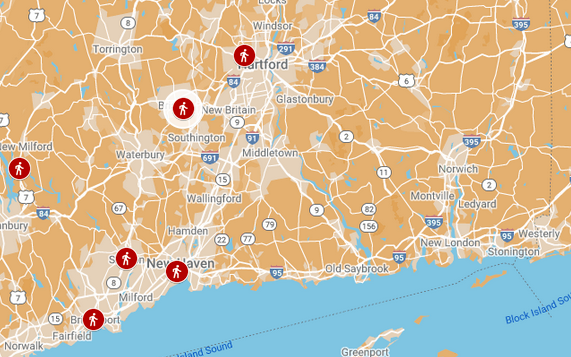
We average about one pedestrian/cyclist death per week in Connecticut, because that’s what decision makers have accepted as a reasonable amount of collateral damage. Until their actions align with their words, their negligence needs to be spoken of as contributing to pedestrian deaths. Instead of focusing on the one bad decision or mistake made by drivers and pedestrians/cyclists, we need to stare hard at those who repeatedly make bad decisions day-after-day by choosing not to act in their roles as mayors, city councilors, planners, engineers, commissioners, and so forth.
For New Haven, New Milford, Shelton, and West Hartford, also contact the CTDOT Commissioner’s Office and demand that they follow their own Complete Streets directive: (860) 594-3000 as those four crashes happened on state routes.
For all of these, you can reach out to Bike Walk Connecticut to find out how they are advocating for safer roads.
Note: Despite advocacy attempts, the Connecticut DMV’s driver’s manual is still not revised from 2019. Laws regarding pedestrians have changed in this time since. There’s an entirely different commissioner than the one whose name is in print. It is five years out of date. If you are someone who believes education is the answer, then contact the DMV Commissioner, Tony Guerrera, and tell him that this guidebook needs a revision immediately.
